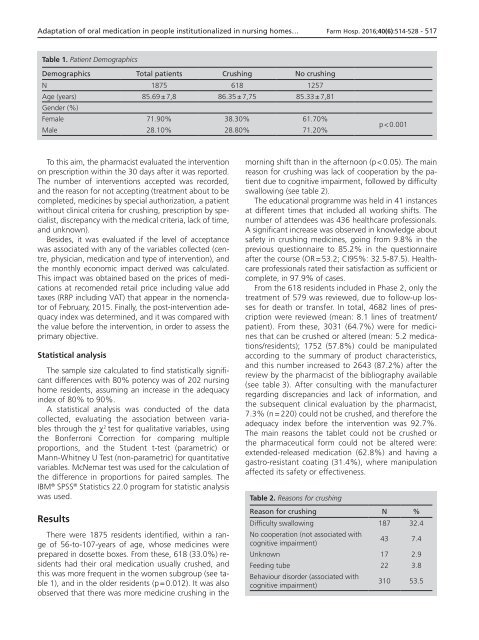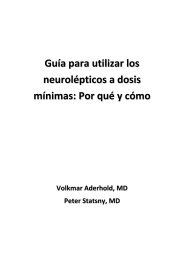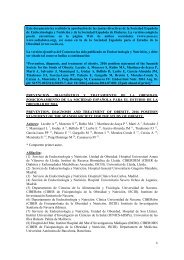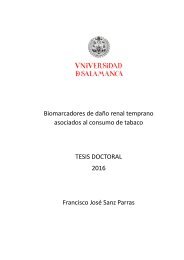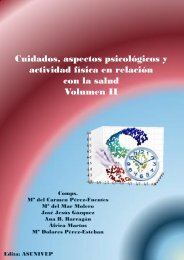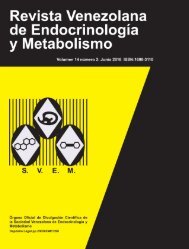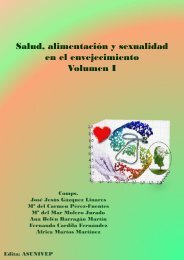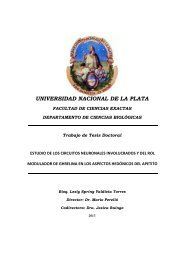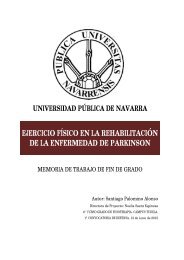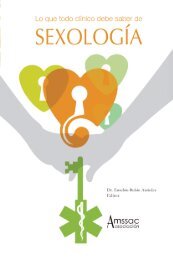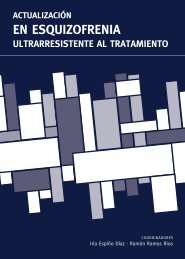Noviembre-Diciembre
156_v40n6(1)
156_v40n6(1)
You also want an ePaper? Increase the reach of your titles
YUMPU automatically turns print PDFs into web optimized ePapers that Google loves.
Adaptation of oral medication in people institutionalized in nursing homes… Farm Hosp. 2016;40(6):514-528 - 517<br />
Table 1. Patient Demographics<br />
Demographics Total patients Crushing No crushing<br />
N 1875 618 1257<br />
Age (years) 85.69 ± 7,8 86.35 ± 7,75 85.33 ± 7,81<br />
Gender (%)<br />
Female 71.90% 38.30% 61.70%<br />
Male 28.10% 28.80% 71.20%<br />
p < 0.001<br />
To this aim, the pharmacist evaluated the intervention<br />
on prescription within the 30 days after it was reported.<br />
The number of interventions accepted was recorded,<br />
and the reason for not accepting (treatment about to be<br />
completed, medicines by special authorization, a patient<br />
without clinical criteria for crushing, prescription by specialist,<br />
discrepancy with the medical criteria, lack of time,<br />
and unknown).<br />
Besides, it was evaluated if the level of acceptance<br />
was associated with any of the variables collected (centre,<br />
physician, medication and type of intervention), and<br />
the monthly economic impact derived was calculated.<br />
This impact was obtained based on the prices of medications<br />
at recomended retail price including value add<br />
taxes (RRP including VAT) that appear in the nomenclator<br />
of February, 2015. Finally, the post-intervention adequacy<br />
index was determined, and it was compared with<br />
the value before the intervention, in order to assess the<br />
primary objective.<br />
Statistical analysis<br />
The sample size calculated to find statistically significant<br />
differences with 80% potency was of 202 nursing<br />
home residents, assuming an increase in the adequacy<br />
index of 80% to 90%.<br />
A statistical analysis was conducted of the data<br />
collected, evaluating the association between variables<br />
through the c 2 test for qualitative variables, using<br />
the Bonferroni Correction for comparing multiple<br />
proportions, and the Student t-test (parametric) or<br />
Mann-Whitney U Test (non-parametric) for quantitative<br />
variables. McNemar test was used for the calculation of<br />
the difference in proportions for paired samples. The<br />
IBM ® SPSS ® Statistics 22.0 program for statistic analysis<br />
was used.<br />
Results<br />
There were 1875 residents identified, within a range<br />
of 56-to-107-years of age, whose medicines were<br />
prepared in dosette boxes. From these, 618 (33.0%) residents<br />
had their oral medication usually crushed, and<br />
this was more frequent in the women subgroup (see table<br />
1), and in the older residents (p = 0.012). It was also<br />
observed that there was more medicine crushing in the<br />
morning shift than in the afternoon (p < 0.05). The main<br />
reason for crushing was lack of cooperation by the patient<br />
due to cognitive impairment, followed by difficulty<br />
swallowing (see table 2).<br />
The educational programme was held in 41 instances<br />
at different times that included all working shifts. The<br />
number of attendees was 436 healthcare professionals.<br />
A significant increase was observed in knowledge about<br />
safety in crushing medicines, going from 9.8% in the<br />
previous questionnaire to 85.2% in the questionnaire<br />
after the course (OR = 53.2; CI95%: 32.5-87.5). Healthcare<br />
professionals rated their satisfaction as sufficient or<br />
complete, in 97.9% of cases.<br />
From the 618 residents included in Phase 2, only the<br />
treatment of 579 was reviewed, due to follow-up losses<br />
for death or transfer. In total, 4682 lines of prescription<br />
were reviewed (mean: 8.1 lines of treatment/<br />
patient). From these, 3031 (64.7%) were for medicines<br />
that can be crushed or altered (mean: 5.2 medications/residents);<br />
1752 (57.8%) could be manipulated<br />
according to the summary of product characteristics,<br />
and this number increased to 2643 (87.2%) after the<br />
review by the pharmacist of the bibliography available<br />
(see table 3). After consulting with the manufacturer<br />
regarding discrepancies and lack of information, and<br />
the subsequent clinical evaluation by the pharmacist,<br />
7.3% (n = 220) could not be crushed, and therefore the<br />
adequacy index before the intervention was 92.7%.<br />
The main reasons the tablet could not be crushed or<br />
the pharmaceutical form could not be altered were:<br />
extended-released medication (62.8%) and having a<br />
gastro-resistant coating (31.4%), where manipulation<br />
affected its safety or effectiveness.<br />
Table 2. Reasons for crushing<br />
Reason for crushing N %<br />
Difficulty swallowing 187 32.4<br />
No cooperation (not associated with<br />
cognitive impairment)<br />
43 7.4<br />
Unknown 17 2.9<br />
Feeding tube 22 3.8<br />
Behaviour disorder (associated with<br />
cognitive impairment)<br />
310 53.5


